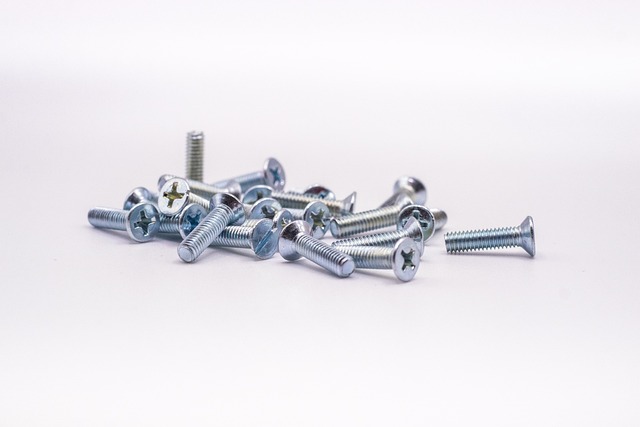Gas mileage optimization is both an economic and environmental priority for vehicle owners. Simple DIY auto repairs like regular oil changes, checking tire pressure, and clearing exhaust debris can significantly improve fuel efficiency. Outdated engine components, neglected transmission fluid, and dirty air filters often cause poor gas mileage. Using the right tools and following guidelines from a vehicle's manual, drivers can save money, enhance performance, and boost fuel economy through DIY methods like those offered in Select DIY Auto Repairs. Key steps include checking and replacing air filters, inspecting tire pressure and rotation, and repairing broken taillight lenses. Aerodynamic adjustments and regular maintenance also contribute to better mileage.
Looking to boost your vehicle’s gas mileage? This comprehensive guide, tailored for select DIY auto repairs, will help you understand gas mileage dynamics and identify common culprits behind poor performance. From basic maintenance checks to advanced efficiency techniques, we equip you with the knowledge and step-by-step instructions to optimize your car’s fuel economy. Get ready to navigate the road with enhanced control over your fuel costs.
- Understanding Gas Mileage and Its Factors
- Common Causes of Poor Gas Mileage
- DIY Tools and Equipment for Repair
- Step-by-Step Guide to Simple Repairs
- Advanced Techniques for Maximum Efficiency
Understanding Gas Mileage and Its Factors
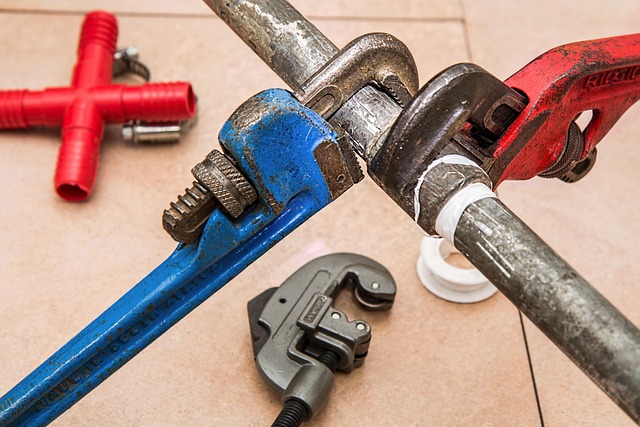
Gas mileage is a crucial aspect of vehicle ownership, impacting both your wallet and the environment. Understanding what affects fuel efficiency can empower drivers to make informed decisions and even take on certain DIY auto repairs to improve their car’s performance. Several factors play a significant role in determining how much gas your vehicle consumes. One of the most common and easily adjustable variables is tire pressure. Maintaining the correct PSI (pounds per square inch) for your tires, which can be checked with a simple gauge available at any auto supply store, ensures optimal contact with the road, reducing rolling resistance and enhancing fuel economy.
Another area to consider is your vehicle’s exhaust system, which contributes to engine performance. A DIY exhaust system repair might seem daunting, but many select repairs are achievable for car enthusiasts. By keeping the exhaust pipes clear of debris and ensuring there are no leaks, you can optimize gas flow, thereby improving mileage. Additionally, routine maintenance such as how to change oil yourself is a fundamental skill that can significantly impact your vehicle’s overall efficiency. Regular oil changes ensure the engine runs smoothly, reducing friction and enhancing fuel economy over time.
Common Causes of Poor Gas Mileage
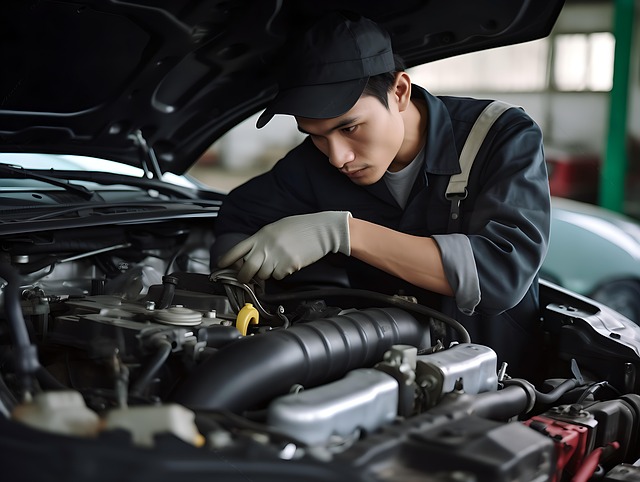
Poor gas mileage can often be attributed to various factors that may be easily overlooked. One of the most common causes is inefficient fuel consumption due to outdated or faulty engine components. For instance, old spark plugs can lead to misfires and reduce engine performance, directly impacting fuel efficiency. Regularly replacing spark plugs without tools is an easy DIY auto repair that can significantly improve mileage. Another significant contributor is a lack of proper maintenance, such as not changing transmission fluid regularly, which can cause slippage and reduce the overall efficiency of the vehicle’s transmission.
Additionally, dirty or clogged air filters restrict airflow, forcing the engine to work harder and consume more fuel. A simple yet effective solution is to replace the air filter yourself; this process is often straightforward and only requires basic tools. Moreover, underinflated tires can lead to higher rolling resistance, resulting in decreased gas mileage. Ensure your tires are properly inflated, and consider using a pressure gauge for accurate readings. Regular maintenance tasks like these, when done as part of Select DIY Auto Repairs, can help drivers save money and improve their vehicle’s performance.
DIY Tools and Equipment for Repair
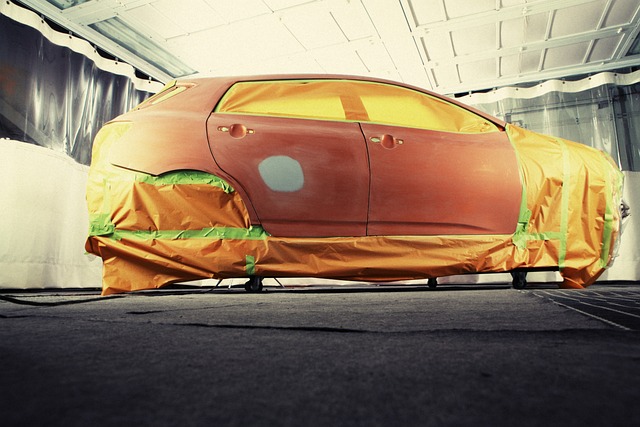
When it comes to improving your gas mileage through DIY methods, having the right tools and equipment is essential. For many basic auto repairs, a few fundamental tools will suffice. Consider investing in a set of high-quality sockets, screwdrivers, pliers, and wrenches that fit your vehicle’s specific bolt sizes. A multi-meter for checking electrical components, a vacuum gauge to monitor engine performance, and an oil change kit are also valuable additions to your DIY repair arsenal.
For more complex tasks, such as fixing a blown head gasket or even learning how to fix a flat tire, specialized tools are necessary. These might include a cylinder head torque wrench, a coolant leak detector, and a tire iron set. Remember, selecting the right DIY auto repairs tools will not only make your maintenance tasks safer but also more effective in enhancing your vehicle’s fuel efficiency.
Step-by-Step Guide to Simple Repairs

Improving your gas mileage through DIY auto repairs can save money and benefit the environment. Before tackling any project, ensure proper safety measures are in place and refer to your vehicle’s manual for specific guidelines. Here’s a step-by-step guide focusing on simple yet effective repairs that can boost efficiency:
1. Check and replace air filters: A dirty air filter restricts airflow, forcing the engine to work harder and consume more fuel. Locate your car’s air filter housing, remove the old one, and clean or replace it as per manufacturer recommendations. This straightforward car electrical repairs diy can yield noticeable mileage improvements.
2. Inspect tire pressure and rotation: Underinflated tires increase rolling resistance, leading to reduced gas mileage. Use a pressure gauge to check each tire’s PSI (pounds per square inch) against the recommended value found in your vehicle’s manual or on the driver’s side door jamb. Regularly rotate your tires to ensure even wear, enhancing fuel efficiency and prolonging tire life. Consider diy muffler repair if excessive noise or vibration is detected, as a faulty muffler can also impact mileage.
3. Replace broken taillight lenses: Damaged or cracked taillights not only affect your vehicle’s aesthetics but can also impair visibility, leading to unsafe driving conditions. Replace broken taillight lenses as soon as possible for better control and fuel economy. This repair is relatively simple and can be done with basic tools and a new taillight lens from an auto parts store.
Advanced Techniques for Maximum Efficiency
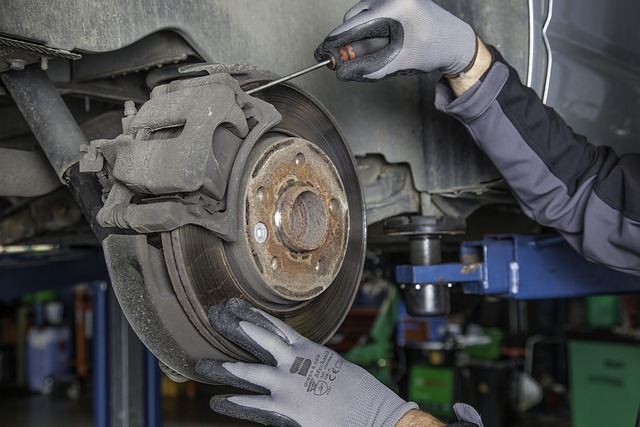
In the quest for improved gas mileage, many drivers are turning to advanced DIY auto repairs techniques. One such method involves optimizing your vehicle’s aerodynamics. By ensuring your car is streamlined, you reduce drag, which in turn enhances fuel efficiency. This can be achieved through simple adjustments like removing roof racks when not in use and keeping your windows clean and free of debris to minimize resistance.
Additionally, regular maintenance plays a crucial role. For instance, replacing a faulty or old car battery can significantly impact power output, thereby affecting overall mileage. The same goes for DIY exhaust system repair; a well-maintained exhaust ensures gases flow freely, allowing the engine to perform at its best. Moreover, addressing any car battery charging problems promptly is essential as it prevents power losses and keeps your vehicle’s electrical systems running smoothly, contributing to maximum efficiency on the road.
By understanding the factors affecting gas mileage and implementing both simple and advanced DIY techniques, you can significantly improve your vehicle’s efficiency. Armed with knowledge about common causes of poor performance, you’re better equipped to make informed decisions. Whether it’s a matter of leaks, air in the fuel system, or incorrect tire pressure, selecting the right DIY auto repairs can save you money and contribute to a greener future. Keep in mind that while these solutions offer great improvements, for complex issues, professional assistance may be required.
